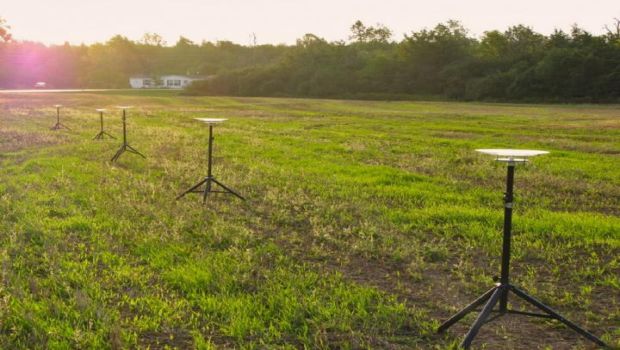Small farmers disadvantaged by limitations on what some say is their basica right to repair their farm equipment.
March 15, 2020

Just a few weeks ago, I wrote a column asking about the death of small farms. Many of them are in the ag version of a hospital’s ICU, unable to cope well with today’s farm economy; some have been transported to hospice care; a few too many have already died a painful death as bankruptcies and suicide take their toll. One of the reasons, I suggested, was the ever-increasing cost of at least trying to remain above water.(To read the column, go to http://bit.ly/38F6FqD)
Bloomberg BusinessWeek just published an article highlighting one of the sources of my concern: “Farmers Fight John Deere Over Who Gets to Fix an $800,000 Tractor.” The story begins with a lead-in about a Nebraska farm show and ‘inveterate manure-stirrer,’ Kevin Kenney. He’s insisting that if you own a piece of farm equipment, you also have the right to repair it as you see fit.
Bloomberg reporters Peter Waldman and Lydia Mulvany wrote, “Kenney leads a grassroots campaign in the heart of the heartland to restore a fundamental right most people don’t realize they’ve lost -- the right to repair their farm equipment. By sheer dint of personal passion, he’s taking on John Deere and the other global equipment manufacturers in a bid to preserve mechanical skills on the American farm. Big Tractor says farmers have no right to access the copyrighted software that controls every facet of today’s equipment, even to repair their personally owned machines. That’s the exclusive domain of authorized dealerships. Kenney says the software barriers create corporate monopolies — and destroy the agrarian ethos of resiliency and self-reliance.”
The headline castigates John Deere, probably because it is the biggest player with the deepest pockets riding the modern range. The article, though, mentions several other peddlers of high tech equipment who might be joining Big Green. Their assault on that agrarian ethos transcends baseball, apple pie and Chevrolet. The absolute devotion to that ethos might be running neck-and-neck with the hallowed teachings of the Southern Baptist Church or the friendly, all-above-average Lutheranism of Lake Woebegone.
What counts is the long-time attitude of “I can do it, myself!” a centuries-old tradition borne out of necessity when someone ready, willing and able to help just a few minutes away was not an option. Calling someone in the first half of the twentieth century? Phones didn’t reach most of rural America, until after rural electrification. Left to their own devices, farmers got used to fixing it or forgetting it. Making do with what they had. Using a simple tool kit containing a few wrenches, a screwdriver, some baling wire and a roll of duct tape.
Today, Big Equipment says if your combine poops out in the middle of the day while working a few thousand acres, you gotta call them and wait hours or days for one of their techies to stop by or risk invalidating the warranty?
“Oh, hell no!” says Kenney and his cohorts. “We want to do it ourselves.”
The problem, though, is the increasing reliance on computerized farming equipment. Software is king today. It is the heart of IoT – the Internet of Things. It helps a farmer become much more efficient. It allows him to do more with fewer hard-to-find ‘hands.’ Some of the newest equipment can be programmed to run 24/7 without a man on board.
That kind of efficiency comes at a steep price, however. A dead-in-its-tracks $800,000 tractor will not respond to a wrench and a screwdriver. The tech guy who will eventually get you up-and-running again will not arrive with a traditional tool kit. Most likely, his tool of choice will be an Apple (computer) and he will use it to ‘tweak’ the onboard software.
Kenney and friends lack the expertise. Small farmers have another crucial disadvantage. They lack the money to even get into the game. A simple-by-today’s-high-electronic-standards John Deere 8R 310 Tractor prices out at near $390,000 plus tax. To make it work most efficiently, it comes with a connectivity subscription to JDLink.
Right there in plain fine print is proof of Kenney’s folly: If you’re not an absolute software programming wizard, you are well out of your league. Your local John Deere rep is the only person who can help. If you don’t have excellent ‘connectivity’ in the far reaches of your farm, you are out of luck, anyway. Your agrarian ethos is useless.
“The spirit of the right-to-repair is the birthright we all share as a hot-rodding nation,” Kenney says, channeling his inner Thomas Jefferson and Big Daddy Don Garlits. Sadly, Big Daddy was one of the last of the 1950s hot-rodders, guys who could break out that old-fashioned toolbox and fix anything mechanical. He knew carbs and fuel pumps and camshafts; he could tune up an engine, swap out a rear end in less than an hour and hand you the keys to a car that would outperform anything from a lesser mechanic. He could not, however, fine-tune a piece of software.
Last year, Elizabeth Warren, campaigning for the Democratic presidential nomination, called for a national law “that empowers farmers to repair their equipment without going to an authorized agent.” Strongly resisted by Big Equipment, it was a noble but doomed gesture.
Financially successful farming is becoming big farming, and it’s rapidly going digital; it is becoming a chip-driven business, an inevitable extension of the Internet of Things. It’s a high tech, high-priced move toward efficiency that only the biggest have access to credit lines that will allow them to survive. The small guy will have to try to subsist on older, pre-high tech gently used equipment – the 21st century version of great grandaddy’s mule.
About the Author(s)
You May Also Like


.png?width=300&auto=webp&quality=80&disable=upscale)
